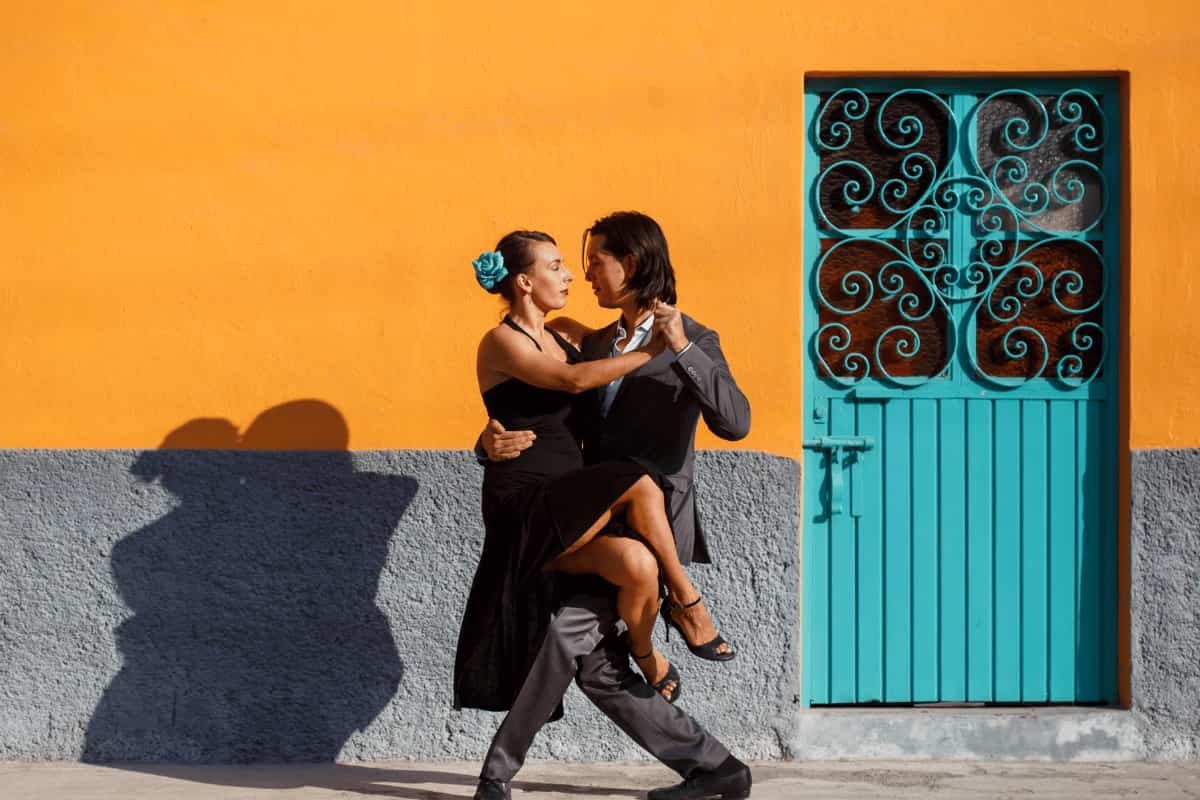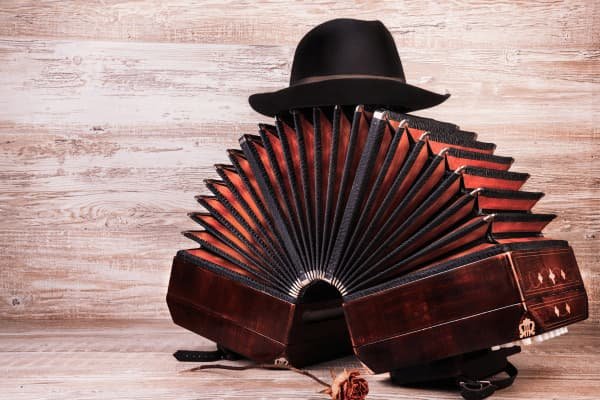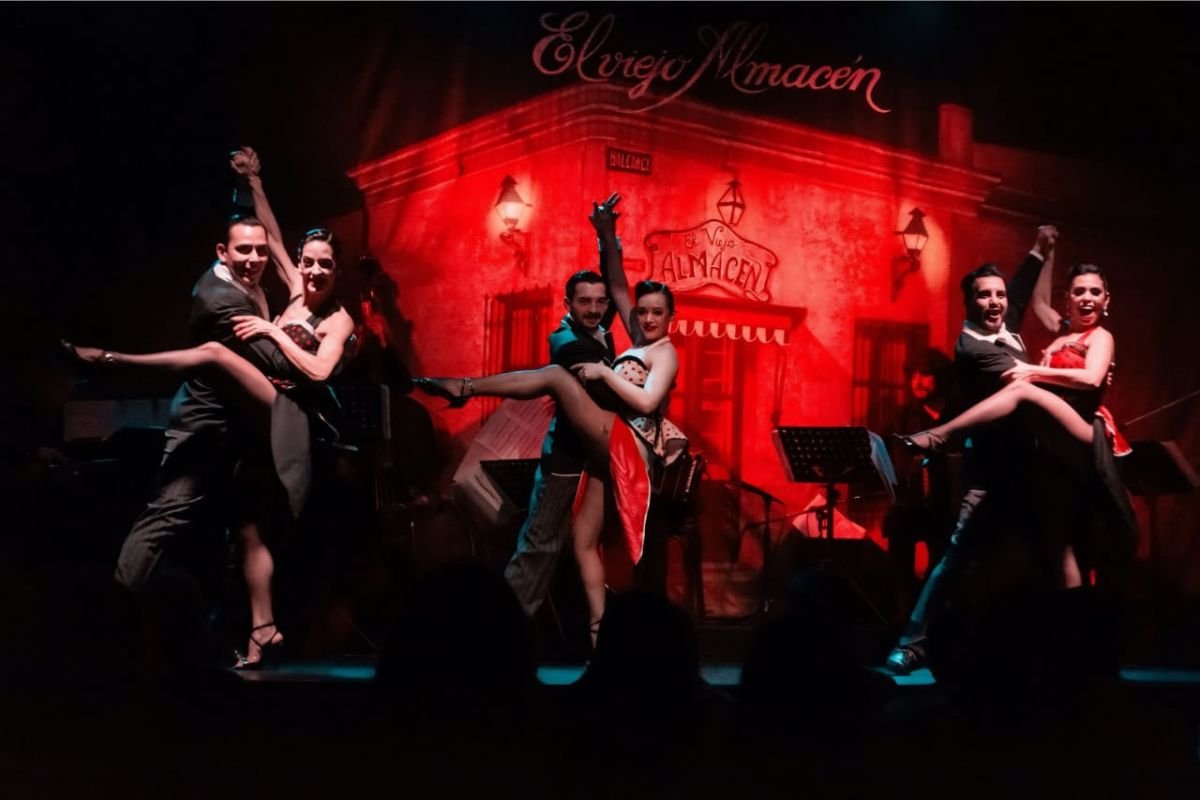
Enjoy an Authentic Milonga in Buenos Aires
Would you like to experience an authentic milonga in Buenos Aires? In this article, we’ll explain everything you need to know about this fascinating dance world.
Tango isn’t just for grand stages; it also has a special home in milongas, where amateur and professional dancers gather to share their passion for this musical genre. Several iconic venues offer the chance to enjoy an authentic milonga in Buenos Aires, where dance becomes the primary language!
To give you a clearer picture: milonga and tango are closely related terms but are not the same, although they are deeply connected within the realm of Argentine dance culture. Below, we present the most emblematic venues and key concepts to help you understand.
What is a Milonga?
The word “milonga” has two main meanings in the context of tango:
- Musical genre and dance: Milonga is a musical genre with a faster and livelier rhythm than tango. It features a binary beat (2/4), making it lighter and more upbeat. While tango is known for its drama and pauses, milonga has a more rhythmic and animated feel, reflected in its dance style with quicker, more agile movements.
- Event or dance venue: A “milonga” also refers to social events or places where people gather to dance tango, vals criollo, and milonga (the musical genre). The phrase “going to the milonga” means attending a venue to dance tango. These events are held in halls or clubs and follow a social format with tandas (sets of songs) and cortinas (musical pauses between tandas).
1. La Catedral del Tango
La Catedral del Tango is one of the most authentic places to enjoy a milonga in Buenos Aires. This venue, with its bohemian and alternative atmosphere, attracts tango enthusiasts of all levels, from beginners to experts. Its relaxed and eclectic vibe makes it a unique space where tango is experienced organically and intimately.
Milongas are held almost every night, along with tango lessons before the event for those looking to refine their skills. La Catedral del Tango is known for its informal atmosphere and community focus. It’s a genuine and alternative spot for true tango lovers seeking to dance in a place rich in history and character.
2. El Querandí
Known for its traditional tango shows, El Querandí also dedicates nights to milongas. Here, you can participate in tango dancing in an elegant and welcoming atmosphere. It’s perfect for those who want to watch a show or immerse themselves in the experience of a Buenos Aires milonga.
El Querandí offers milongas in a sophisticated setting where the history of tango resonates in every corner. You can also take tango lessons before the milongas. It’s an iconic tango venue, balancing spectacle and participation, ideal for experiencing tango traditionally.
3. Bar Sur
With over 50 years of history, Bar Sur is one of Buenos Aires’ most traditional tango spaces. This iconic bar offers intimate shows and milongas where attendees can dance in a cozy, welcoming environment. Its small dance floor and close atmosphere make it a special place for those who want a personal tango experience.
Live music makes every night a unique experience. The performers interact with the audience, creating a close connection. Bar Sur keeps the essence of Buenos Aires tango alive in a small, family-like format, perfect for those seeking an authentic, non-touristy experience.
4. Café Tortoni
The legendary Café Tortoni is renowned for its history and coffee but also as a meeting place for tango enthusiasts. While best known for its tango shows, it occasionally hosts milongas, becoming an iconic venue for tango lovers looking to experience the pure culture of tango.
Though not a regular milonga spot, when Café Tortoni organizes these events, the space transforms into a setting where dancing tango becomes a truly Buenos Aires experience. It’s a historic venue that has seen many tango legends, and attending a milonga here connects you to the rich tradition of Buenos Aires tango.
5. Café de los Angelitos
As one of Buenos Aires’ most historic cafés, Café de los Angelitos is a reference point for tango lovers. Alongside its shows, it hosts special milonga nights, allowing attendees to enjoy a complete tango experience.
On certain nights, Café de los Angelitos offers milongas where dancers can revel in tango within an elegant, classic environment. Its rich history and the caliber of its dancers make it an ideal venue for a stylish milonga evening.
6. Homero Manzi
Esquina Homero Manzi is an iconic venue, not only for its history but also for its tanguero atmosphere, reflecting the bohemian spirit of the Boedo neighborhood. While best known for its tango shows, it also holds special milonga nights.
This historic venue offers an opportunity to dance in a space steeped in tango legend, allowing you to experience the dance in its most traditional form.
Is Dancing Tango the Same as Dancing at a Milonga?
Not quite, although they’re related. Dancing tango at a milonga (the event) involves performing one of the musical styles played throughout the evening. Milongas usually feature tandas of various music styles, including tango, milonga (the genre), and sometimes vals criollo. Each tanda consists of several songs, and dancers take to the floor to perform the style being played.
Milongas (events) aren’t just about dance—they’re also social gatherings. Friends and acquaintances often chat between tandas or after dancing. Tango is more than just a dance; it’s a community. Friendships are formed at milongas, with regular gatherings to enjoy the dance and company.
Guide to Dancing at Milongas
Once on the dance floor, tango at milongas is typically more social than stage tango seen in performances. It’s an improvised dance where couples interpret the music in the moment, maintaining a close connection with their partner.
Movements are generally smaller and simpler in social tango, especially since the dance floor can be crowded. Couples move in a circular pattern, counterclockwise around the floor.
Don’t miss the chance to enjoy an authentic milonga in Buenos Aires—a must-do for anyone looking to experience tango in its purest form. These venues offer not just performances but the opportunity to actively engage with tango culture. For personalized assistance or help with bookings, you can contact our specialists in travel, tourism, and tango.






